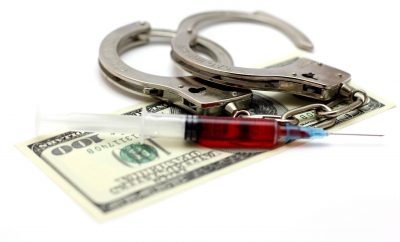
News
The Scary Side of Designer Drugs
During the summer and fall of 2013, a drug called “Molly” started to make headlines. As a 20-something, I’d of course heard about it before, but in recent months, the term has become mainstream. In a stretch of a few weeks last summer, four deaths were blamed on overdoses of Molly, which is just the common name for MDMA.
Molly, or MDMA, is what is classified as a “designer drug,” meaning that it’s a drug not naturally occurring or produced, like marijuana. Instead, a designer drug is initially created in a lab, by experimenting on existing drugs or compounds.
Designer drugs are notoriously difficult to regulate and make illegal, simply because of chemistry. There are essentially limitless combinations of drugs that can be synthesized. Anytime a substance is specifically banned, it’s pretty easy to make a variant of that substance, or discover a new substance altogether.
A man named Dr. David Caldicott founded a group called WENDINOS, an acronym for “Welsh Emerging Drugs & Identification of Novel Substances Project,” which catalogs and tests new drugs. There’s a similar organization in Australia, also founded by Caldicott and called, ACTINOS. There may be similar organizations in the United States, but if so, I was not able to find any. Most regulation and cataloging seems to come from the US government.
Caldicott described the problem with the evolution of designer drugs, stating, “I compare the phenomenon of illicit drug use to influenza. During the course of a year influenza changes slightly, which is why you get a new jab every year. But every 10 to 15 years we see a major shift.”
The other interesting thing about these designer drugs is that they’re often legal…at least for a short period of time. They can be developed much more quickly than laws can be passed to regulate them. The law does eventually catch up, to be sure, but it’s usually at least a few months or a year after the drug has seen some moderate use.
There’s also something to be said for the use of the internet in this, for lack of a better description, grey market. The internet has proliferated this market in two ways. First, it allows chemists and other designer drug marketers to share their information, experiments, tips, and successes. Once a chemical formula has been derived, it can be shared and made by anyone who has the same equipment.
The internet also allows substances to be sold on a virtual, unregulated international market. Mike Power, an investigative journalist with Medium, wrote a powerful piece about his experience with this market. He described how he was able to order a substance that wasn’t necessarily illegal in the UK from a Chinese chemical manufacturer. He gave a rather flimsy excuse for why he needed the chemicals, in fact, scientifically speaking, the excuse was blatantly false. But the Chinese company didn’t look into his reasoning, and a few weeks later sent him the chemically synthesized compound in powder form. If Power was a drug dealer, as opposed to a journalist, he could turn around and sell that drug for a big profit. And the entire thing would probably be legal.
What’s especially concerning about this whole thing is that we have no idea what these synthesized drugs could do in the long term. We know the long term effects of marijuana, cocaine, and any other mainstream drug. We even have some handle on the long term effects of abusing prescription drugs, such as Vicodin. But when these compounds are being created and changed out so quickly, there’s no real telling what they can do.
That’s incredibly scary. Many of the Molly-caused deaths this year are believed to be because of impure substances mixed in with the drugs. When you consider the willingness of young people to take Molly from their friends or from dealers without any certification of what they are putting in their body, it’s terrifying to imagine what these unregulated new drugs could do. But what can be done? As Power put it, “And here lies the problem. We can ban drugs. But we can’t ban chemistry, and we can’t ban medical research.”
—
Anneliese Mahoney (@AMahoney8672) is Lead Editor at Law Street and a Connecticut transplant to Washington D.C. She has a Bachelor’s degree in International Affairs from the George Washington University, and a passion for law, politics, and social issues. Contact Anneliese at amahoney@LawStreetMedia.com.
Featured image courtesy of [Derek Gavey via Flickr]








Comments